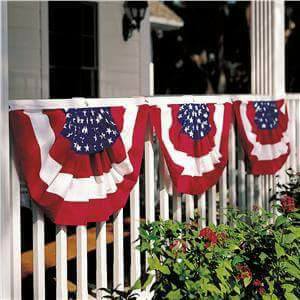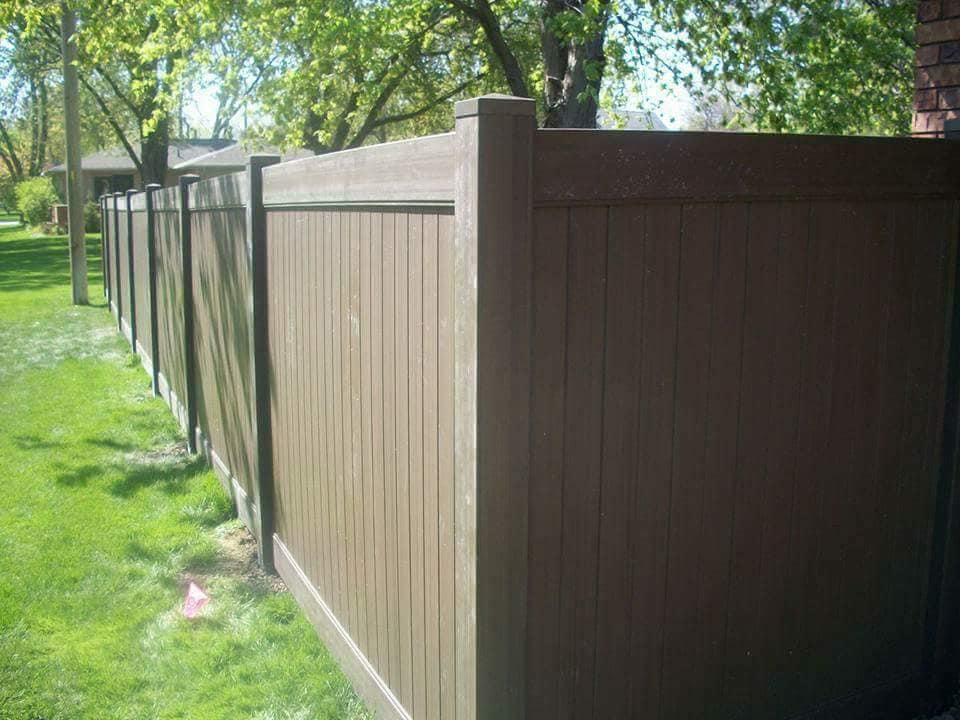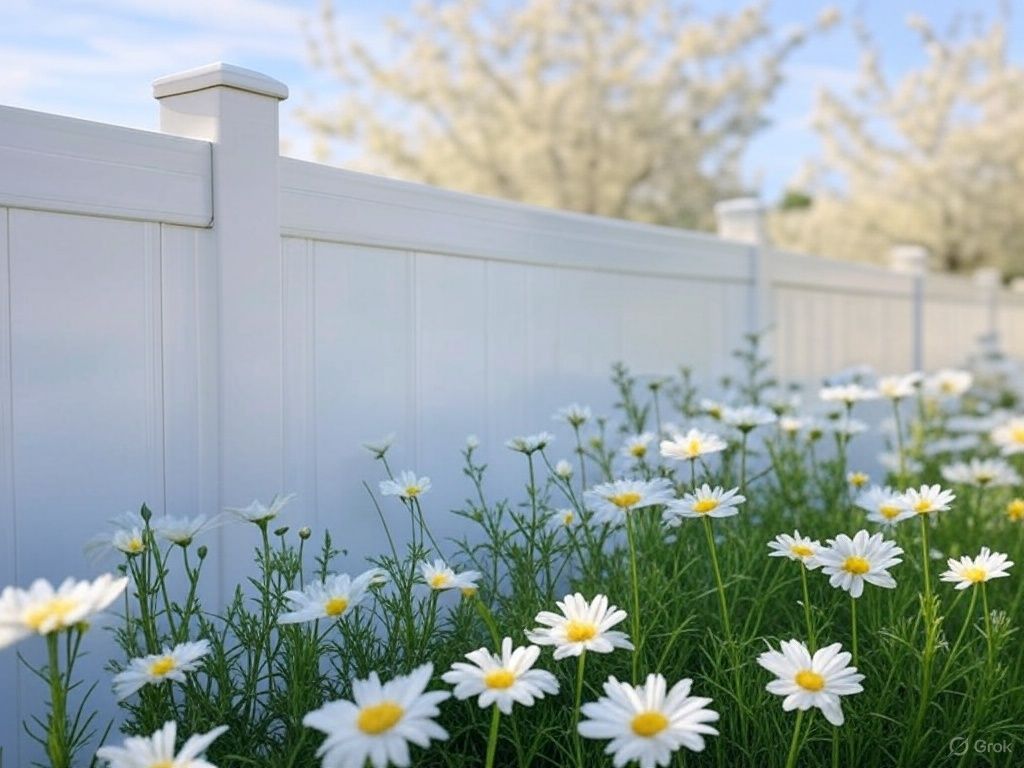Introduction
When it comes to securing your property, choosing the right fencing material can make all the difference. Two popular options are chain-link and stockade fences. While both serve the purpose of providing boundaries and security, they offer distinct advantages and disadvantages. This comprehensive guide will delve deep into the nuances of these two types of fencing, ultimately answering the question: Chain-Link vs Stockade—Which Provides More Security?
In this article, we’ll cover a wide range of topics related to both chain-link and stockade fences, including their durability, maintenance requirements, aesthetic appeal, best uses, and much more. By the end of this discussion, you should have a clearer understanding of which fencing option might be best suited for your needs.
Understanding Chain-Link Fencing
What is Chain-Link Fencing?
Chain-link fencing consists of woven metal wire that forms a diamond pattern. It’s typically made from galvanized steel or coated with vinyl for added protection against rust and corrosion. This fencing type is widely used due to its affordability and ease of installation.
Best Uses for Chain-Link Fencing
Chain-link fences are incredibly versatile. They're commonly used in:
- Security Applications: Ideal for commercial properties and industrial sites. Pet Containment: Keeping pets safe within a designated area. Gardens and Yards: Defining spaces without obstructing views. Baseball Fields: Providing boundary markers while allowing spectators to see the action.
How Long Does a Chain Link Fence Last?
A chain-link fence can last anywhere from 15 to 20 years or more if properly maintained. Factors such as climate conditions and environmental exposure can affect its lifespan.
Chain Link Fence Height Regulations
Before installing a chain-link fence, it's crucial to check local zoning laws regarding height regulations. Most municipalities allow heights ranging from 4 to 6 feet for residential areas but may require permits for taller structures.
Chain Link Fence Coatings and Finishes
To enhance durability and aesthetics, many chain-link fences come with various coatings:
- Galvanized Steel: The most common choice, offering excellent rust resistance. Vinyl Coated: Available in different colors for improved visual appeal.
Understanding Stockade Fencing
What is Stockade Fencing?
Stockade fencing consists of wooden boards placed closely together, often treated with preservatives to prevent rot. This style offers a solid barrier that provides enhanced privacy compared to chain-link fencing.
Vinyl Fencing Styles and Design Options
Although stockade fencing is primarily wooden, there's an increasing trend toward vinyl stockade fences that mimic the traditional wooden look while offering better weather resistance.
Privacy Options for Vinyl Fences
If you opt for vinyl over wood in your stockade-style fence:
- Consider solid panels that block visibility completely. Choose designs with decorative tops that add an artistic flair while maintaining privacy.
Comparative Analysis: Chain-Link vs Stockade—Which Provides More Security?
Both chain-link and stockade fences have their strengths when it comes to security; however, each serves different purposes effectively.
Visibility vs Privacy: A Key Difference
Chain-link fences allow visibility into your property; this can be beneficial for monitoring children or pets but less so for privacy. In contrast, stockade fences provide substantial privacy by blocking views entirely.
Durability Factors: Which Lasts Longer?
While both types can endure varying weather conditions:

- Chain-link tends to resist rust if properly coated but can suffer damage in extreme winds. Stockade fencing may require more regular maintenance due to potential rot but offers sturdiness if built correctly.
Security Upgrades for Chain Link Fences
There are ways to enhance the security features of chain-link fences:
- Installing barbed wire along the top Adding slats or privacy screening
These additions can deter unauthorized access significantly.
Maintenance Considerations: How Do They Compare?
How to Maintain a Vinyl Fence vs Chain-Link Maintenance Needs
Vinyl Fence Maintenance Schedule
A vinyl fence requires minimal upkeep; here’s what you need:
Regular cleaning with soap and water every few months. Inspecting panels yearly for any signs of damage or mildew. Repairing damaged panels promptly helps maintain appearance and function.How to Clean a Vinyl Fence
Using mild detergent mixed with water will usually do the trick! For tougher stains or mildew:
Use a soft scrub brush. Rinse thoroughly afterward to prevent soap residue buildup.How to Prevent Rust on a Chain Link Fence
Rust prevention involves applying protective coatings regularly:
Inspect your fence periodically for signs of wear. Reapply anti-rust paint or protective coating as necessary.Cost Considerations Between Chain-Link and Stockade Fences
Vinyl Fence Installation Cost Breakdown
The cost of installing vinyl fencing varies based on several factors like height, design complexity, and labor costs involved:
| Type | Average Cost per Linear Foot | |------------------|-----------------------------| | Vinyl | $20 - $40 | | Wooden Stockade | $15 - $30 | | Chain-Link | $10 - $25 |
Knowing these figures can help you budget effectively!
Upgrading from Chain Link to Vinyl Fencing: Is it Worth It?
Switching from chain link to vinyl may seem daunting financially but consider long-term benefits like reduced maintenance costs and improved aesthetics—often making it worth every penny!

Fencing Solutions Customized For Specific Needs
Child-Safe Vinyl Fencing Options
For families concerned about safety:
Opt for rounded tops on vinyl fences. Ensure no gaps exist where children could squeeze through.Vinyl Fences For Pool Enclosures
When securing pools:
Select gates that self-close. Install locking mechanisms at heights children cannot reach easily.FAQs
1. Can You Add Privacy Slats to a Chain Link Fence?
Yes! Privacy slats can easily be inserted into existing chain-link fences to enhance seclusion without tearing down what's already there.
2. Are Vinyl Fences Good For Windy Areas?
Absolutely! Many vinyl options are designed specifically for high-wind zones due to their superior flexibility compared to wood or metal alternatives.
3. How To Remove Mildew From A Vinyl Fence?
Mix vinegar with water or use commercial mildew cleaner applied directly onto affected areas followed by thorough rinsing!
4. How To Secure A Chain Link Fence To Concrete?
Use fence contractors concrete anchors designed specifically for fences; drill holes through post bases into concrete slabs before inserting anchors firmly into place!

5. Durability Of Vinyl Fences In Extreme Weather?
Vinyl typically withstands harsh conditions better than wood due mainly because it doesn’t warp under moisture stress nor crack during freeze-thaw cycles commonly seen in colder regions!
6. How To Dig Post Holes For Vinyl Fencing?
Utilize a post-hole digger ensuring holes are at least twice as wide as posts themselves & deep enough (usually around 36 inches) below ground level depending on local frost lines!
Conclusion
So there you have it! When weighing up the pros and cons betweenchain-link vs stockade fencing options—it's clear both have unique features tailored towards specific needs whether prioritizing visibility/security balance versus absolute privacy & aesthetic appeal!
Ultimately deciding between these two hinges largely upon personal preferences combined with practical considerations like budget constraints & desired functionality rather than just sheer looks alone! So take your time exploring all available options before committing—it'll pay off in spades later down the road!